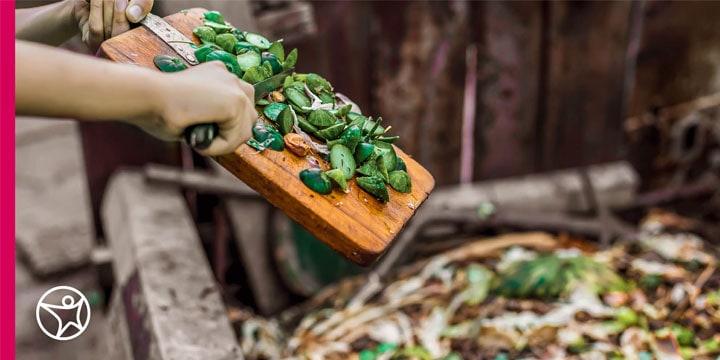Setting Healthy Screen Time Limits for Students Learning Online
by Julie Hersum
by Valerie Kirk
Did you know that food scraps and yard waste make up more than 30 percent of what we throw away? This waste takes up space in landfills, where it releases methane, a greenhouse gas that is harmful to the environment. All of that material could instead be composted!
Composting is nature’s method of recycling food and other organic waste into material that can be added to soil to help plants grow. In addition to reducing methane emissions in landfills, composting helps protect plants against diseases and reduces the need for chemical fertilizers.
To celebrate Earth Month, get your student involved by doing this Composting 101 lesson that includes composting activities for kids. Not only will your student gain an understanding of what composting is and why it is important, they will get to do a hands-on science activity that will teach them about organic decomposition and how plants grow. The Composting 101 lesson and composting activities for kids are appropriate for elementary school, middle school, and high school students, and can build on the lessons they are learning in science class. The lesson is also sure to spark their curiosity about other ways they can make a difference by helping our planet.
Your student will gain an appreciation for the importance of celebrating Earth Month with this Composting 101 lesson that includes the reasons why we should compost, the three types of compost, and what can and can’t be composted.
Start the lesson by asking your student what compost is. Explain that composting is using leftover food and other organic matter that combine into material that can be added to soil to help plants grow.
Explain to your student that there are many benefits to composting, including:
There are three different types of composting:
Two types of waste are needed for composting, which you will use in the composting activities for kids: food for the microbes and a bulking agent. Here are some options you can use:
Bulking Agent
Food for the Microbes
Avoid using any of the materials listed below for a compost, as they may be harmful to people, plants, or the environment in general.
After the natural process of composting is finished, you can use the compost in a variety of ways. To start, use it to help your plants and vegetables grow by putting it in the soil mixture of potted plants or spreading it around trees and shrubs. You could also use the compost as mulch for your garden or landscaping. Teaching your student about gardening could lead to a lifelong activity that is not only good for the environment, but also has many positive mental and physical health benefits.
No matter what you decide to do with your compost, the important part is spending time with your child celebrating Earth Month and learning about the importance of recycling and composting materials.
Composting activities for kids are pretty simple to do and are often done with materials you already have on hand.
The Soda Bottle Composting for Kids science activity is a hands-on STEM activity where your student will learn how to make a compost bin for kids out of a two-liter soda bottle. They can then use the compost to help grow their own plants, watching—and learning—about the plant lifecycle.
Get the Soda Bottle Compost Activity
You can make a bigger compost bin for kids by using a plastic container that is at least 3 feet tall and 3 feet wide. This science activity can be used to teach about composting in school and can extend learning for students in online school or homeschool.
If you are looking for more science activities to help you extend your online student’s learning, check out the Connections Academy Resource Hub, which is full of STEM activities, including making your own fossils and how to create crystals in your kitchen.
Did you know that the Soda Bottle Composting for Kids science activity is similar to lessons your student would complete in online school? If you enjoyed spending time with your student learning about composting and supporting their learning in celebration of Earth Month, maybe online school is right for you! Join a Connections Academy information session to learn more about a new school experience.
